My Way with the Ricoh GR iiix (2023)
20th November 2023
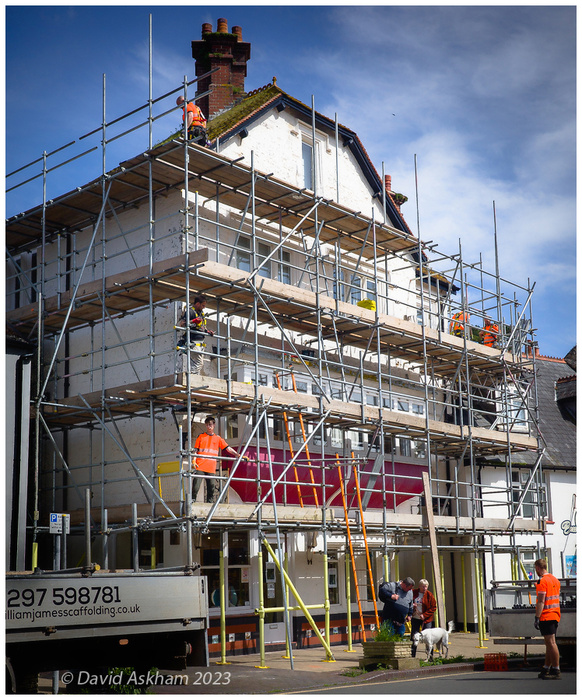
Maintenance on the streetside
(All non-camera pictures were taken with my Ricoh GRiiix)
Sometimes a photographer is out and about for purposes other than to take photographs. That is when, in the past, a compact camera could be slipped into a pocket. But the market for such compact cameras has shrunk as a consequence of increasingly capable smartphones. There is very little choice for a photographer nowadays. However, one brand has survived and remains very popular with street photographers, in particular, and that brand is Ricoh.
In March 2023 I wrote an article about my old 1st version, Ricoh Digital camera, bought in 2007, shortly before it was superseded and replaced. https://david2008.photium.com/the-original-ricoh-gr-digital At the end of my article, I mentioned that my affection for that model had rekindled my interest in a modern, capable compact camera. So I decided to buy the latest model and promised to write about it. Here is that article. Will it be a tempting alternative to a smartphone?
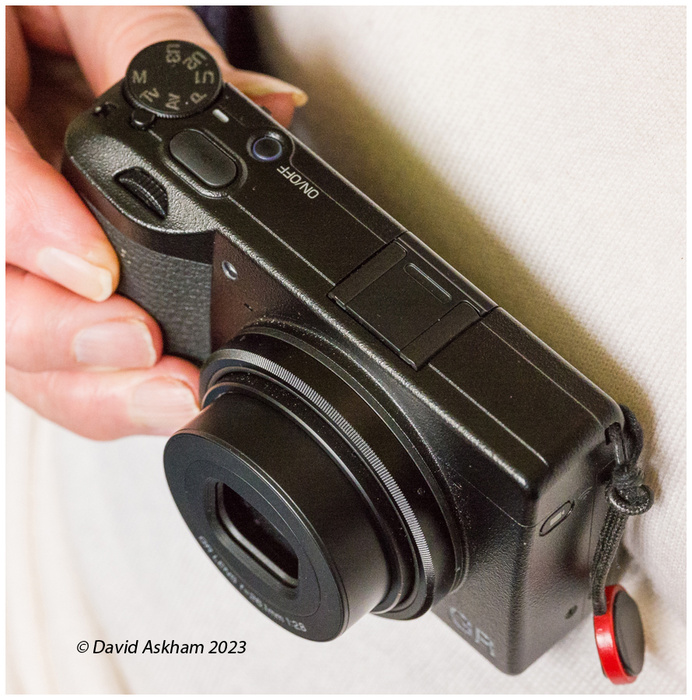
The Ricoh GR iiix is a very small compact camera with a fixed lens and an APS-C sensor, quite large for the camera’s diminutive size. Surprisingly, its form factor, size and weight has not changed significantly in over fifteen years of development in the digital era. (There was a remarkably similar film version produced long before digital). That, alone, is proof of a hugely successful design. Its metal chassis feels very well-made and is reassuring in the hand.
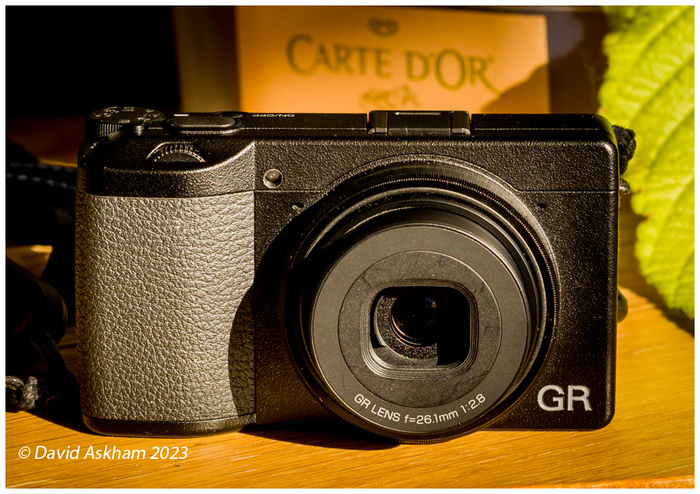
Whereas all previous models of this camera had a fixed 28mm equivalent focal length lens, or thereabouts, the latest and still current model I bought, the Ricoh GR iiix, is unique, having a lens focal length equivalent to 40mm. That is much closer to the way the human eye sees the world. While its sibling, the Ricoh GR iii, continues to capture a wider angle view, much beloved by street photographers. The two cameras continue to be marketed, latterly with additional special edition kits. Some photographers possess both versions, while the GR iiix version has found favour with a new sector of photographers, who do not use wide angle lenses regularly. (In my case I already have the wide angle segment well covered)
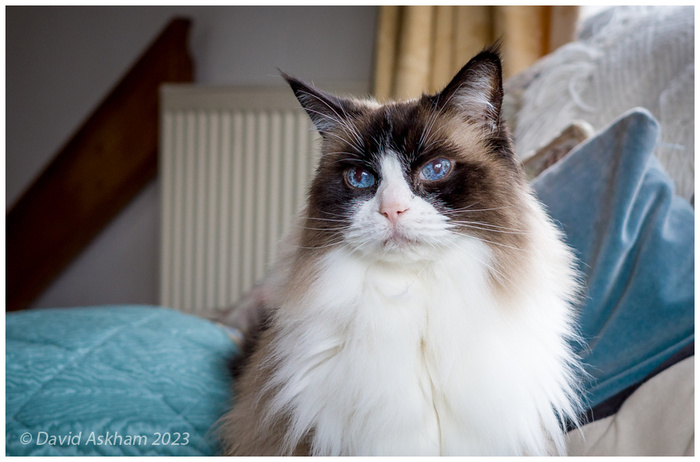
Daydreaming!
(Daylight indoors. Catching a fleeting moment)
How do I use the Ricoh GR iiix?
I use a Peak Design system comprising a thin yet broad neck strap or, alternatively, the neck strap can be quickly replaced by a wrist strap which couples into the same common camera attachments. The anchors, however, needed an additional waxed cotton loop to enter the tiny lugs built into the camera body. I discussed this with Peak Design, who recognized the problem and hinted that they would consider an improved solution. In use, I have two solutions: first, hidden on a neck strap, under a coat; or in one hand when actively shooting; Most users will find a wrist strap preferable in practice.
Now let us consider its main features. A small, well-hooded lens is extended from its body and projects an image on an ample sized screen, which is bright and clear. There is no inbuilt viewfinder, which contributes to its compactness. In very bright light, it is possible to raise the screen brightness. However, it is also possible to attach an optical viewfinder, at a cost of added bulk. In practice, I can usually arrange my shooting to avoid intense midday sunlight.
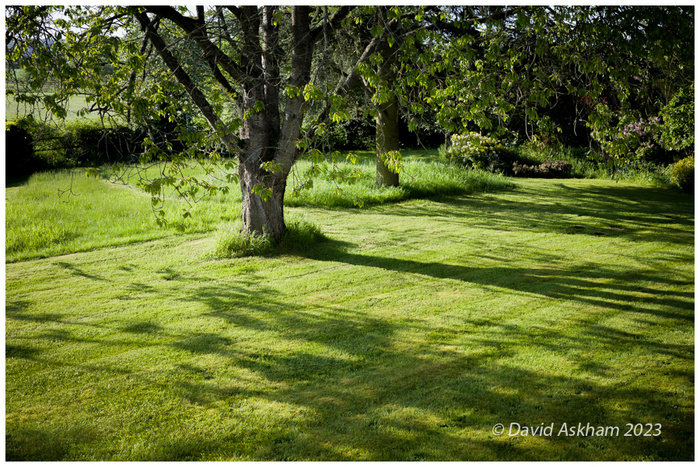
Early morning shadows
One shooting method surprised me. Operating a conventional camera at eyelevel alerts unaware subjects. It just looks intrusive and potentially threatening when arms and hands are raised to head height. Whereas by viewing the screen away from your eyes, down in front of your chest or midriff, the camera is very much less threatening. Without an attached viewfinder, you can easily be classified as just another user of a smartphone. All controls on the rear are grouped to the right of the screen, making it easy to operate with one hand.
A small camera contains a small battery, which is a small price to pay for such a compact instrument. I maximize the battery life by turning the camera off soon after completing a shot. If I suddenly see a potential subject, I lift the camera in front of my chest, simultaneously pressing the power button. I am never waiting for the camera.
The lens is a new design with a maximum aperture of f/2.8. It is bitingly sharp and produces excellent results on a 24mp sensor. Cropping is easily possible. In fact, framing lines can be selected for 50 mm and 71 mm equivalent coverage. I allocate this option to the function button.
Controls are well positioned on the camera body, and fall naturally into place for most hands and fingers. A full range of exposure modes, selectable through a secure dial on the top plate, provides quick alternative methods of shooting. Furthermore, you can record your favourite settings into one of three easily recalled User settings, also located on the top dial.
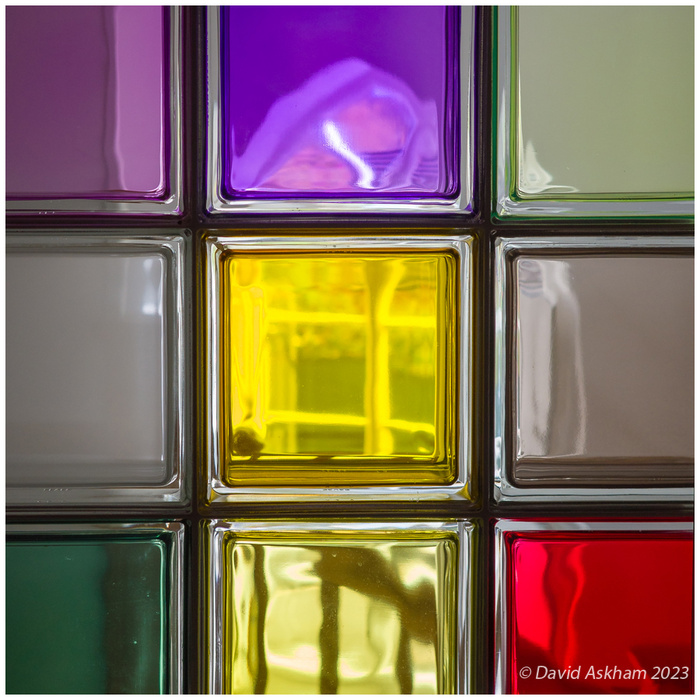
A puzzle picture - What is it?
The menu is comprehensive and provides for most photographer’s needs. It even possesses processing capabilities, including Raw conversion, within the firmware. I am making new discoveries frequently when exploring its scope. I am very fond of shooting in manual mode and using my fingertip to set the focus point on the display, and even fire at the end of that sequence. This was one of many features added to the camera, long after it was introduced. In fact, the camera has'been considerably enhanced by this progressive programme of upgrading, which could well have been saved for a later model. Not so with Ricoh. New solutions are being added fairly frequently, thereby extending its scope and versatility.
Had the Ricoh GR iiix been my only camera, I would have been very tempted to add the wide-angle and tele-converters. But it isn't and I keep it simply for those occasions when I want the minimalist approach.
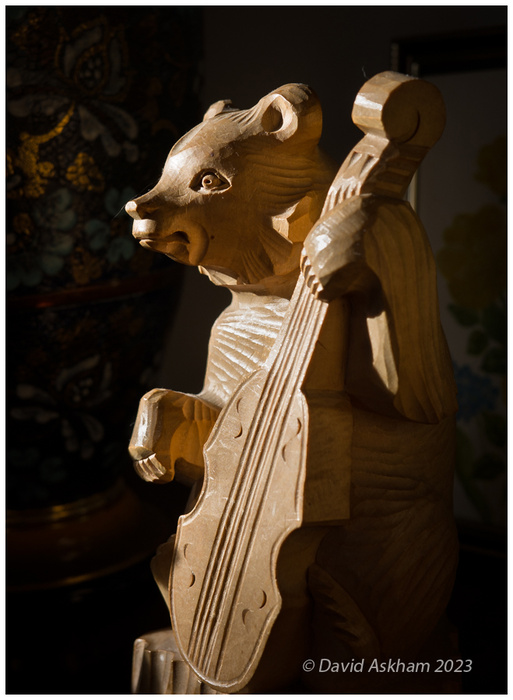
A final note
In Conclusion
The Ricoh GRiiix is often my carry-anywhere camera, when photography is not necessarily in my mind. In order to gain more control over my exposures, I prefer to use Manual mode. You can see the results immediately on the screen and experience fewer failures and have less need for remedial action in post-processing. It avoids having to dial in exposure compensation and forgetting it is set!
Is it likely to displace my affection for Leica cameras? Only in the compact sector, where the little Ricoh iiix reigns supreme. Is it likely to replace my smartphone? Highly unlikely, even if you could suggest one which captures images on an APS-C sensor. Just pretending that a phone in your hands is a camera is laughable. A smartphone is extremely unlike using a camera when it comes to handling! But if you have only grown up with a smartphone, I guess you will need some convincing.
For those readers who would like to see one of the more convincing videos on the modern Ricoh GR cameras, I can thoroughly recommend this one: https://youtu.be/fEBdnAlVypM?si=zFMNHbS_NR6qN4be In fact, it is rewarding to search the many videos related to this family of cameras. Many are inspiring, whether you own a Ricoh or not.
---===---
Addendum dated 1 December 2023 - Puzzling display options
Recently I was surprised when my LCD screen was black when switching on my GR iiix camera. Usually it showed a picture of the scene ahead. I pressed the Display button and saw a 4X magnified section of my scene. Another press and the screen went black again, followed by another press giving me the magnified section again. This behaviour was most unusual. Puzzled, I wondered whether this was a quirky outcome of a recent firmware upgrade. I did some research.
My friend, who has the same camera model, had an identical experience with his camera. So my copy is not unique.
Unlike my previous experience of display options, which are predictable and contained on a closed loop, the Ricoh has a programmable version (Menu C-3), which allows you to set the displays you prefer. That is a useful feature with many more options available.
There are two issues, one which is easily solved by unticking a box. The other needs a firmware upgrade.
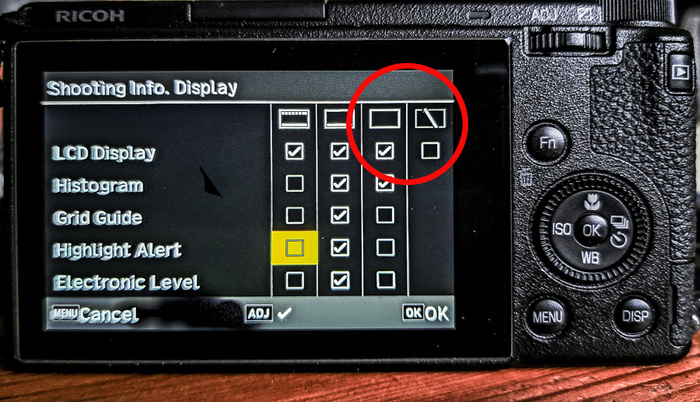
Referring to the picture above, you will see various choices in four columns. The first two columns have alternative displays of important menu items. The third is for a clear uncluttered image, despite showing it as black; while the fourth column has a white diagonal line and allows you to turn off the display, if you are using an optical viewfinder to frame your pictures. (The red circle highlights the column headings under discussion)
The second issue is the confusion introduced when a long press of the display button is accidentally made, thereby showing a magnified section of your image. I believe that is only useful while focusing manually. Whatever the reason, the time interval is so short that it is all too easy to activate magnification when you don’t need it, thereby delaying your desired selection of display aids.
I suggest that the time duration of a long press of the display button (in order to magnify the image), should be marginally lengthened when firmware is next amended. I have suggested this to my dealer asking him to suggest this change to Ricoh GR Support.
In summary, I now have a clearer understanding of how various displays are selected. But I hope Ricoh will take note of my suggestion regarding the background colours of column headings 3 and 4; and will also consider adjusting the time interval of the long-press to avoid it being activated inadvertently. Users of Ricoh GR iii cameras are advised to become familiar with this display matrix and the possibilities it now offers.
---===---
If you have enjoyed this article, or have a question to ask, please leave a comment and I will respond to you.